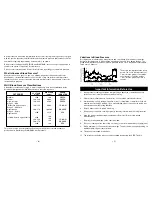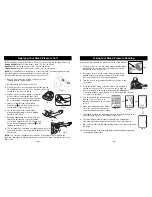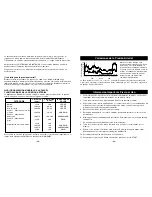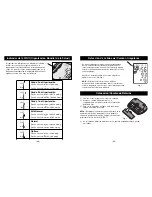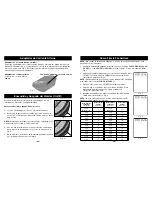
Variations in Blood Pressure
Blood pressure is influenced by many factors and can change from moment to moment.
Normally, blood pressure is lowest during sleeping periods and rises during the day. The
graph below represents variations in blood pressure shown over a day with measurements
taken every 5 minutes.
The dotted line represents the sleep
period. The rise in blood pressure at
1 p.m. (A in the graph) corresponds
to a stressful occurrence and at
7 p.m. (B in the graph) a period of
exercise.
Important Information Before Use
1.
Blood pressure readings should be interpreted by a physician or trained healthcare
professional who is familiar with your medical history.
2.
Perform your measurement in a quiet place. You should be seated and relaxed.
3.
Avoid smoking, eating, taking medication, alcohol consumption or physical activity 30
minutes prior to taking a reading. If you are exhibiting signs of stress, avoid taking your
measurement until the feeling subsides.
4.
Rest 15 minutes prior to taking a reading.
5.
Remove any constrictive clothing or jewelry that may interfere with the cuff placement.
6.
Keep the monitor stable during measurements. Remain still; do not talk during
measurements.
7.
Record your daily readings on the chart provided.
8.
Take your readings at the same time, each day (or as recommended by your physician).
9.
Wait a minimum of 15 minutes between readings. The wait time may vary depending on
individual physiological characteristics.
10. This device is intended for adult use.
11. The inflation or deflation process can be stopped by pressing the START button.
– 7 –
Blood pressure is measured in millimeters (mm) of mercury (Hg) and is generally recorded
with the systolic pressure (120) listed first and the diastolic pressure (80) listed second. The
numbers are typically separated by a slash mark (/) as shown.
Both pressure readings, the SYSTOLIC and DIASTOLIC, are necessary for a physician to
evaluate the status of a patient’s blood pressure.
Please contact your physician for specific information regarding your own blood pressure.
What Influences Blood Pressure?
Many factors such as genetics, age, sex, altitude, physical activity, anxiety, muscular
development, certain medications or even the time of day can influence blood pressure.
Influences such as sleep or relaxation decrease blood pressure, while anxiety or exercise
increase blood pressure.
WHO Blood Pressure Classifications
Standards for assessment of high or low blood pressure have been established by the
World Health Organization (WHO) as shown on the following chart:
This chart is only a general guideline. Contact your physician or trained healthcare
professional to determine your NORMAL blood pressure.
– 6 –
Optimal
Normal
High - Normal
Stage 1 - Mild
Borderline Hypertension
Stage 2 - Moderate
Hypertension
Stage 3 - Severe
Hypertension
Isolated Systolic Hypertension
CATEGORY
<120
120-129
130-139
140-159
160-179
≥
180
≥
140
140-159
160-179
≥
180
<80
80-84
85-89
90-99
100-109
≥
110
<90
<90
<90
<90
SYSTOLIC
(mmHg)
DIASTOLIC
(mmHg)
COLOR
INDICATOR
GREEN
GREEN
GREEN
YELLOW
ORANGE
RED
YELLOW
ORANGE
RED




